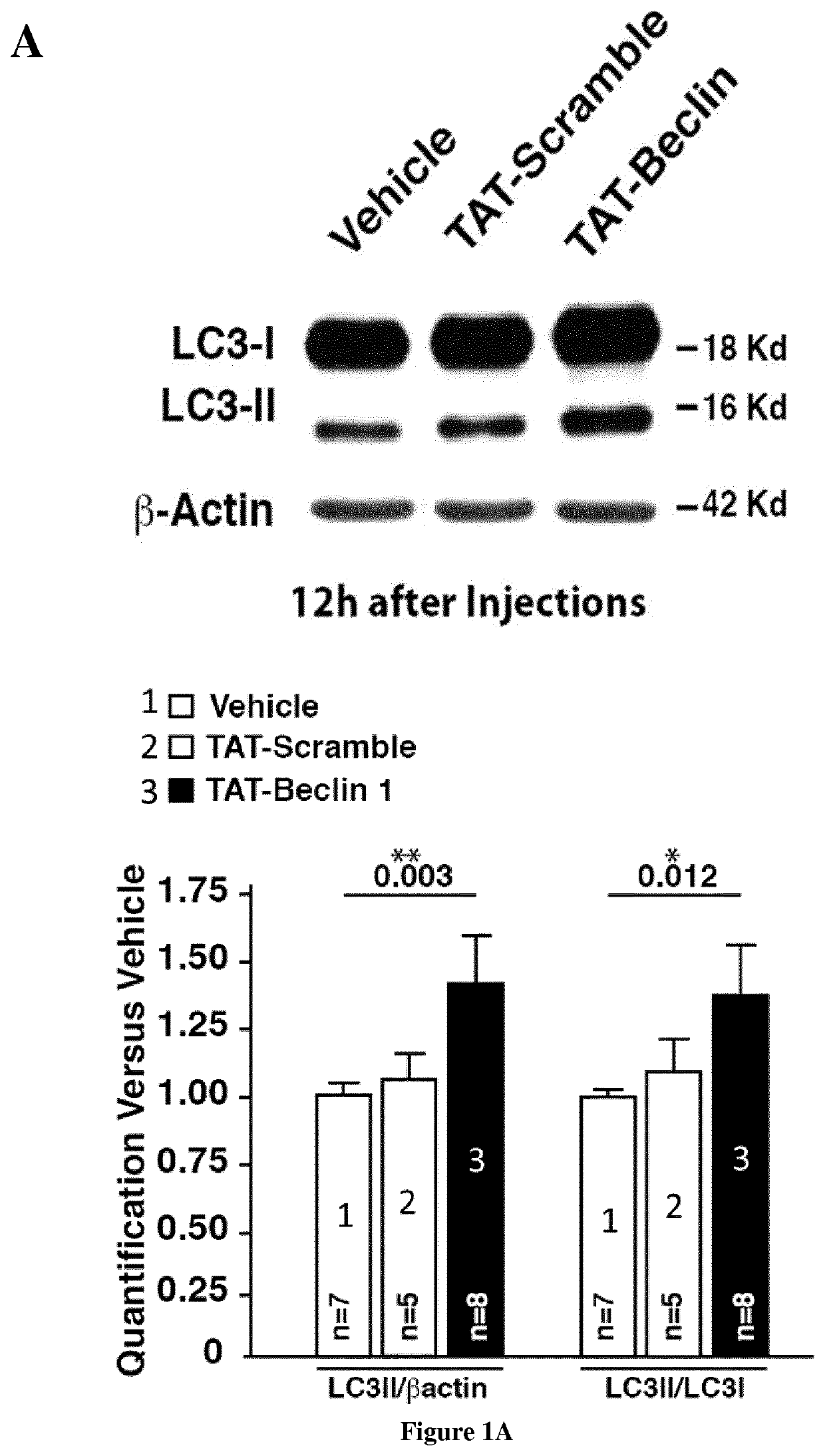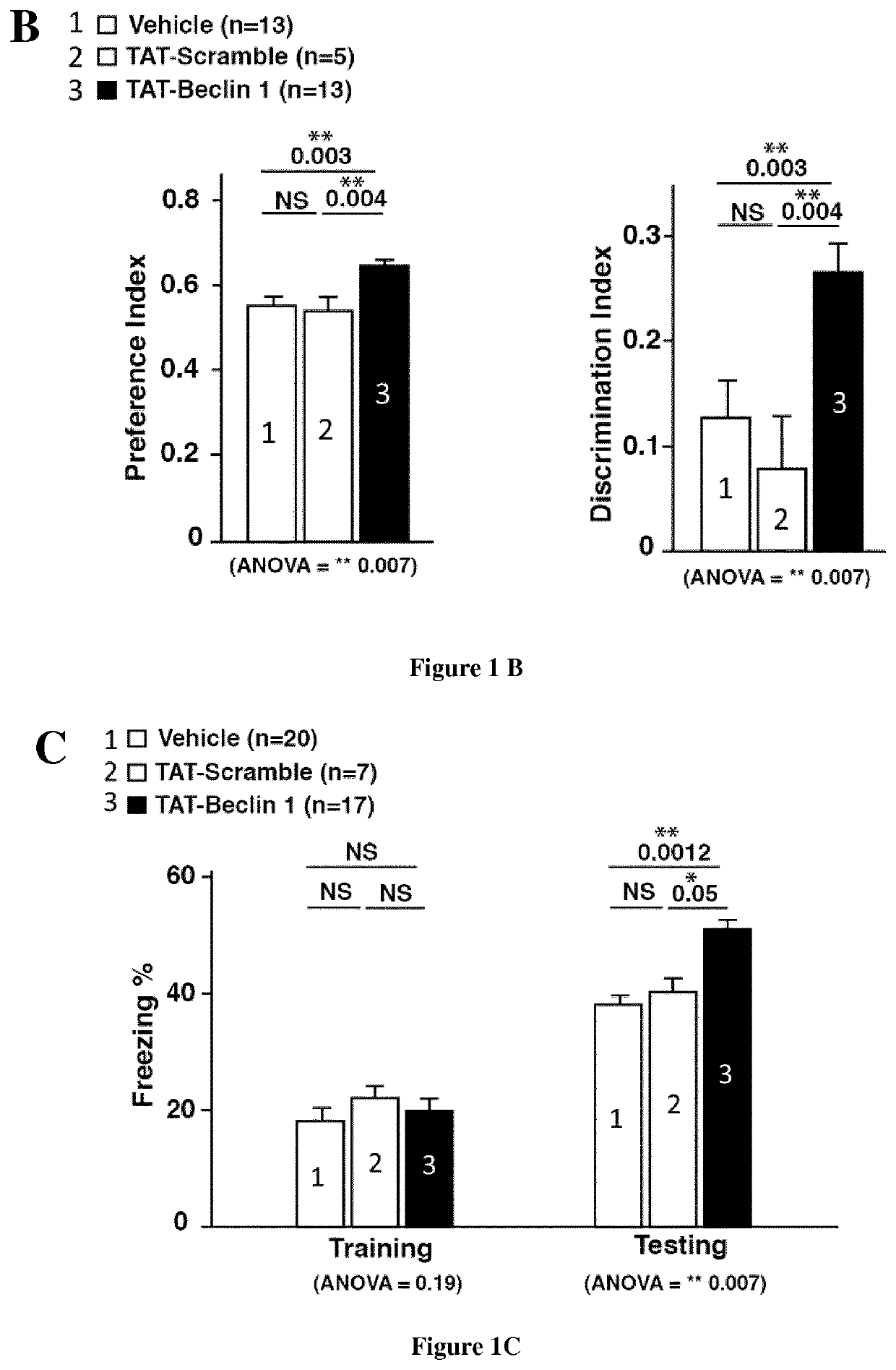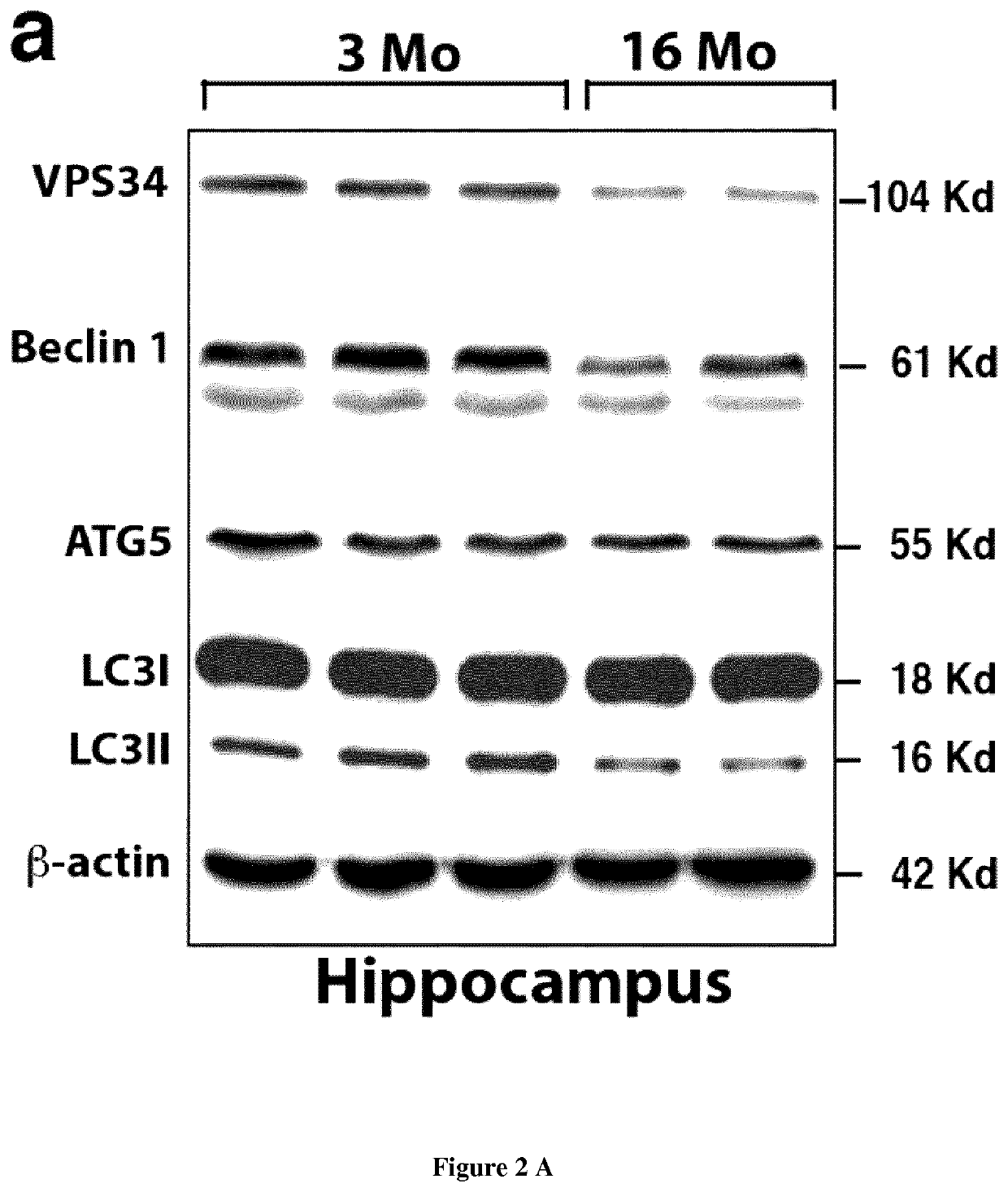Method to restore or improve cognitive functions
- Summary
- Abstract
- Description
- Claims
- Application Information
AI Technical Summary
Benefits of technology
Problems solved by technology
Method used
Image
Examples
example
[0131]Material & Methods
[0132]Animals
[0133]All experiments were performed on C57BL / 6J male mice obtained from Janvier Laboratory stock. All mice were 3 month- or 16-months old at the start of experiments. For all experiments, we used littermates as controls. Upon arrival, mice were housed at least 2 weeks before any behavioral or molecular testing. Mice were housed five animals per cage in polycarbonate cages (35.5×18×12.5 cm), under a 12 hours light / dark cycle (lights off at 8:00 pm) with ad libitum access to food and water prior to experimentation. All behavioral experiments were performed between 10 AM and 5 PM. Group sizes were determined after performing a power calculation to lead to an 80% chance of detecting a significant difference (P≤0.05). All efforts were made to minimize animal suffering and the number of animals used accordingly to the 3R's rule. In all experiments, animals were randomly assigned to treatment groups. All behavioral experiments were performed in accorda...
PUM
 Login to View More
Login to View More Abstract
Description
Claims
Application Information
 Login to View More
Login to View More - R&D
- Intellectual Property
- Life Sciences
- Materials
- Tech Scout
- Unparalleled Data Quality
- Higher Quality Content
- 60% Fewer Hallucinations
Browse by: Latest US Patents, China's latest patents, Technical Efficacy Thesaurus, Application Domain, Technology Topic, Popular Technical Reports.
© 2025 PatSnap. All rights reserved.Legal|Privacy policy|Modern Slavery Act Transparency Statement|Sitemap|About US| Contact US: help@patsnap.com



